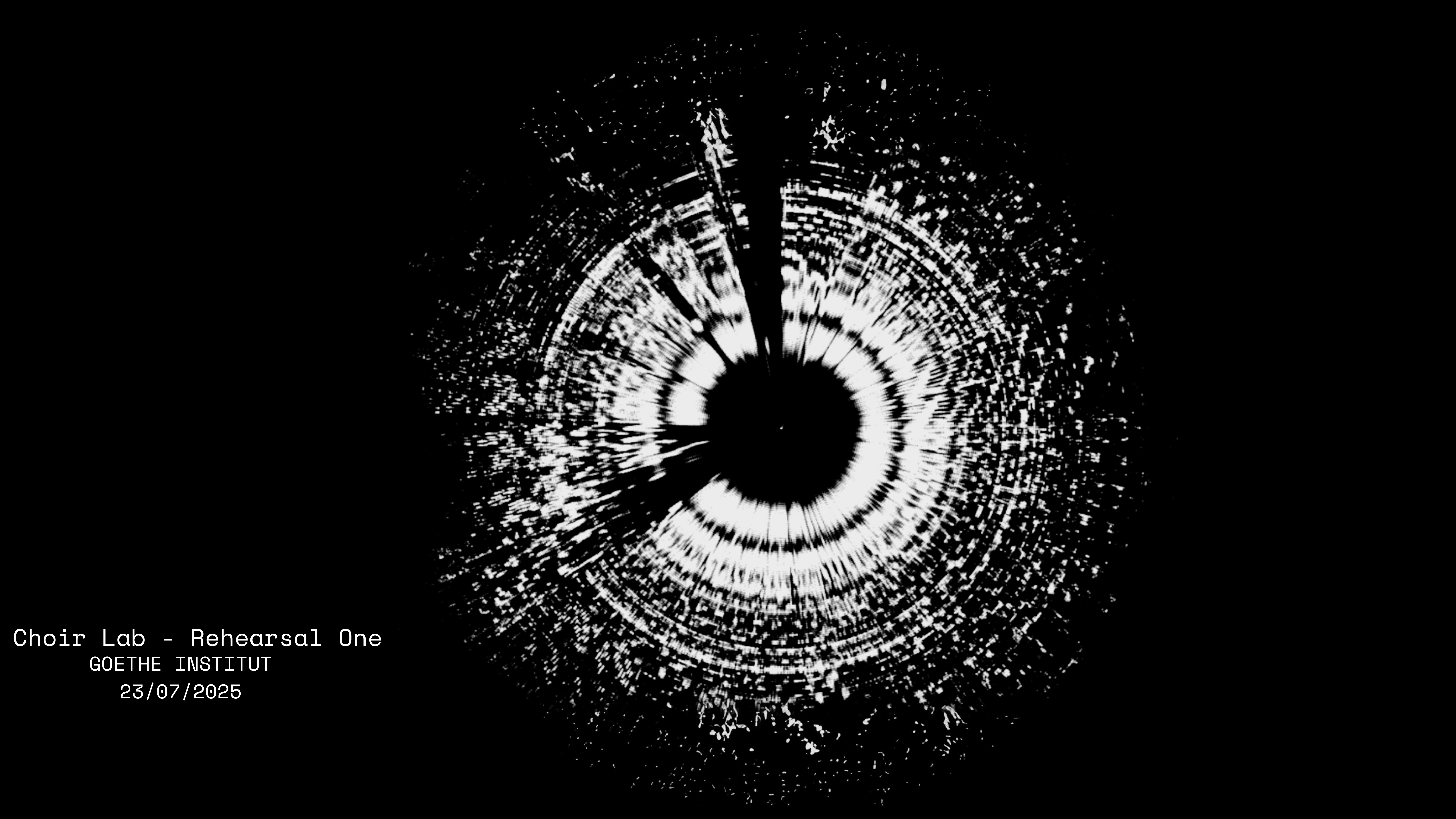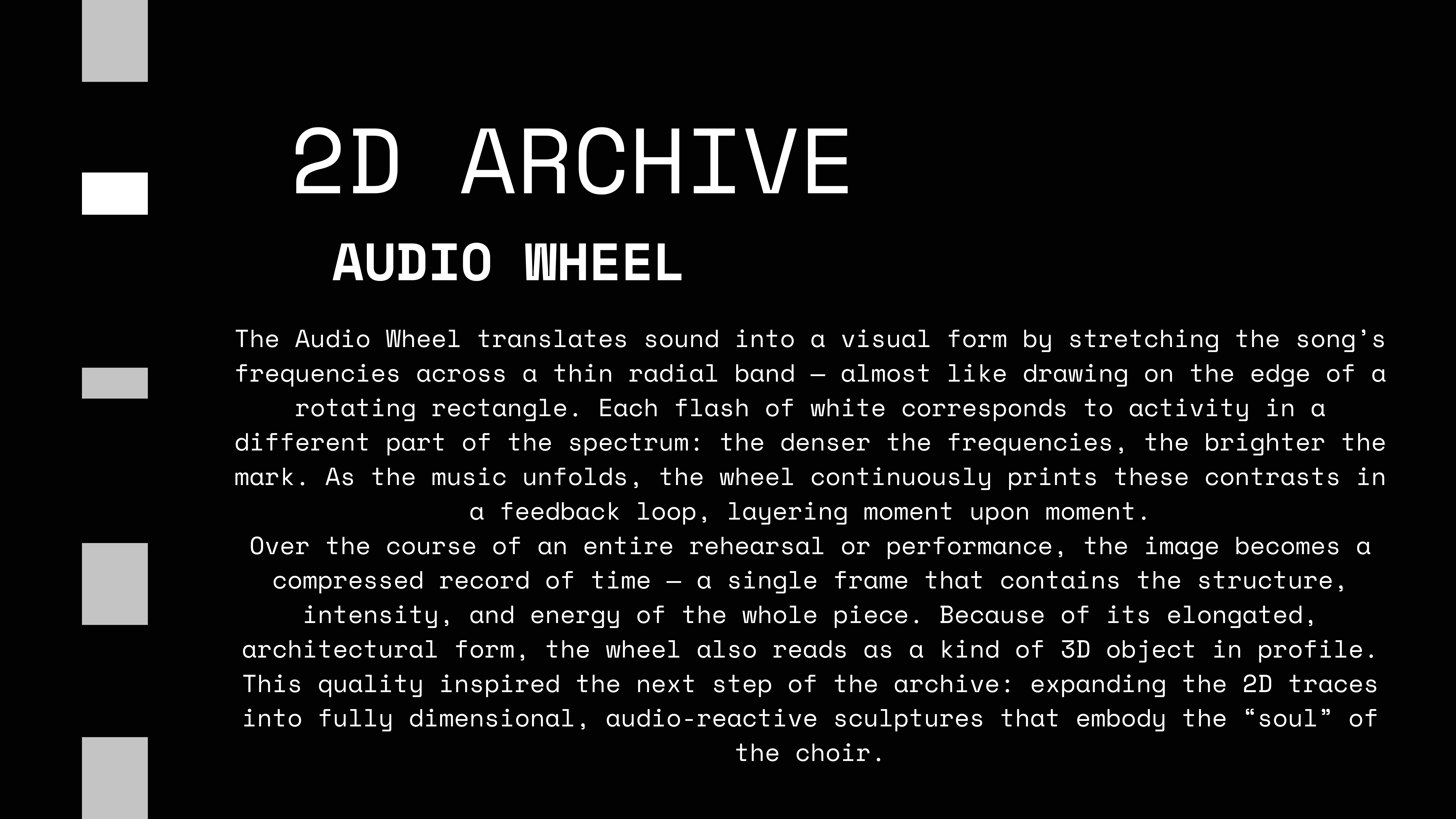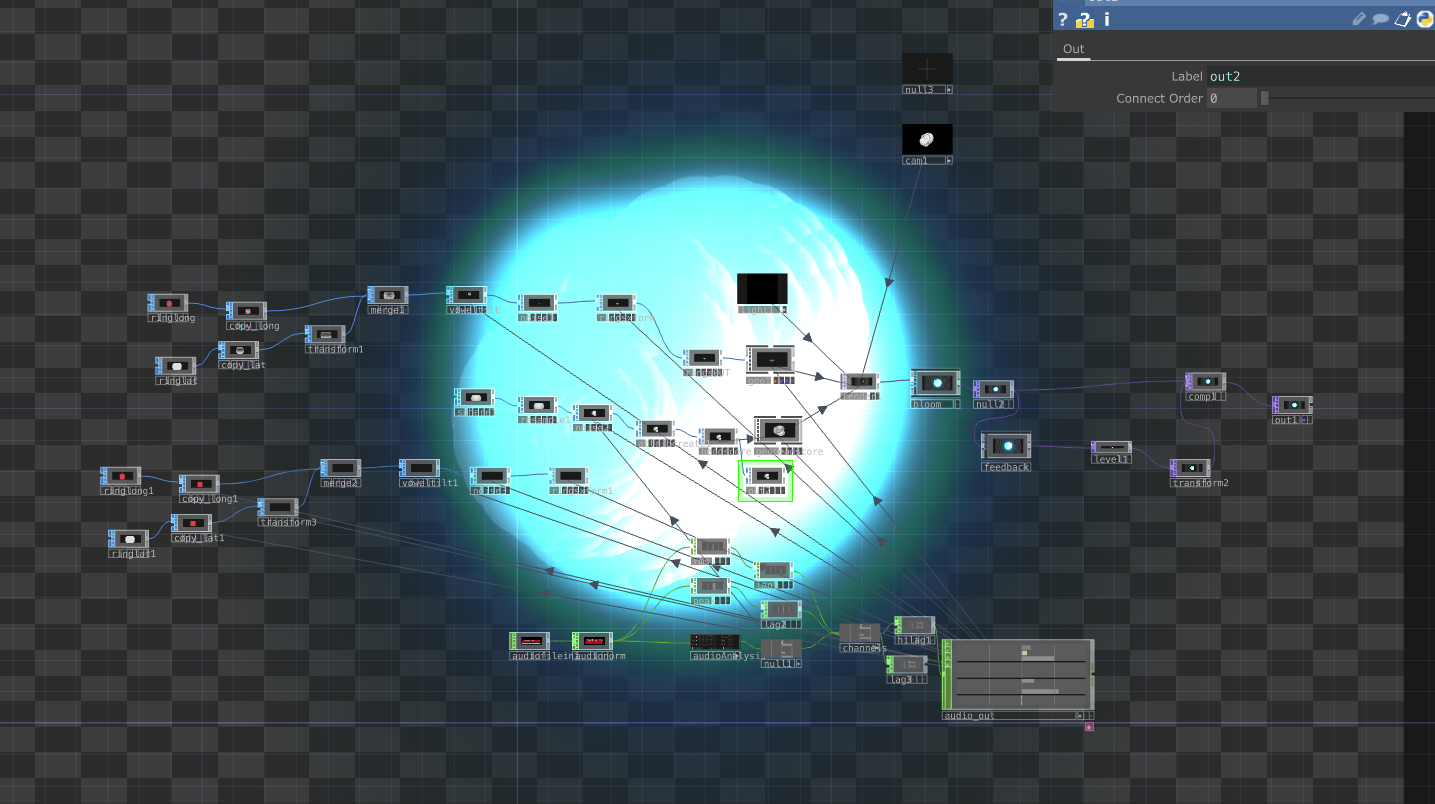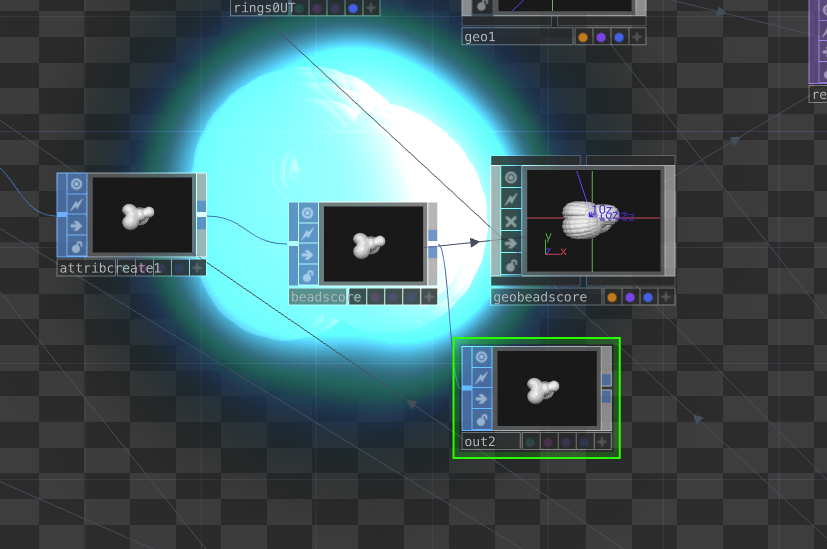
Rehearsal One
Goethe-Institut — 23/07/2025
This project investigates how collective sound can be archived as image and form. Using creative technologies such as TouchDesigner, rehearsal recordings were analysed and transformed into alt-typographical objects—visual structures where many individual signals resolve into a single, powerful whole. Inspired by the Audio Wheel (a technique that unfurls a song’s frequencies around a circle so the music “prints” itself into an image), the archive extends that idea into three dimensions, letting sound actively shape geometry, material and motion.

Recorded explanation of the 2D archival method.
The 3D component extends the audio-wheel logic into space. Using audio reactivity in TouchDesigner, the choir’s recordings drive parameters of geometry—position, scale, deformation, emission and material response. Peaks and harmonics write forces into the model; dynamics modulate motion and light. The music effectively sculpts its own archive: each piece produces a distinct spatial signature that can be rendered, recorded, or explored live.
Explanation 01 — Overview of the audio-reactive pipeline, showing how mesh structures were created to extend the length of animations and how camera motion was used to generate multiple visual perspectives.
Explanation 02 — Demonstrates how individual materials worked together, combining multiple reactive layers into one unified visual presence.

Diagram showing the completed TouchDesigner network.

Alternative view of the final TouchDesigner workflow.
Documentation of the 3D archive in motion.
Together, the 2D prints and 3D forms create a dual memory of Choir Lab: one that compresses time into images, and one that lets the sound itself build space. Both are archives and artworks—made possible only when many voices act as one.